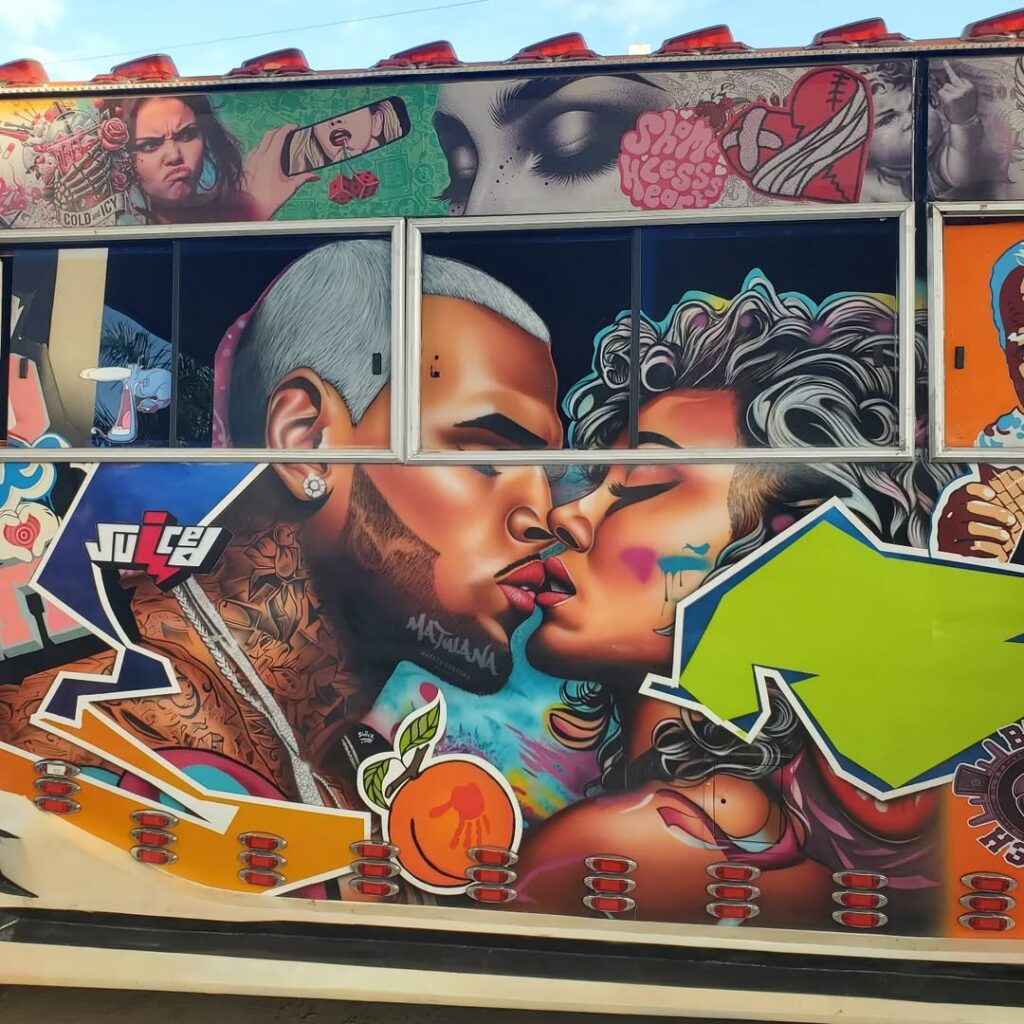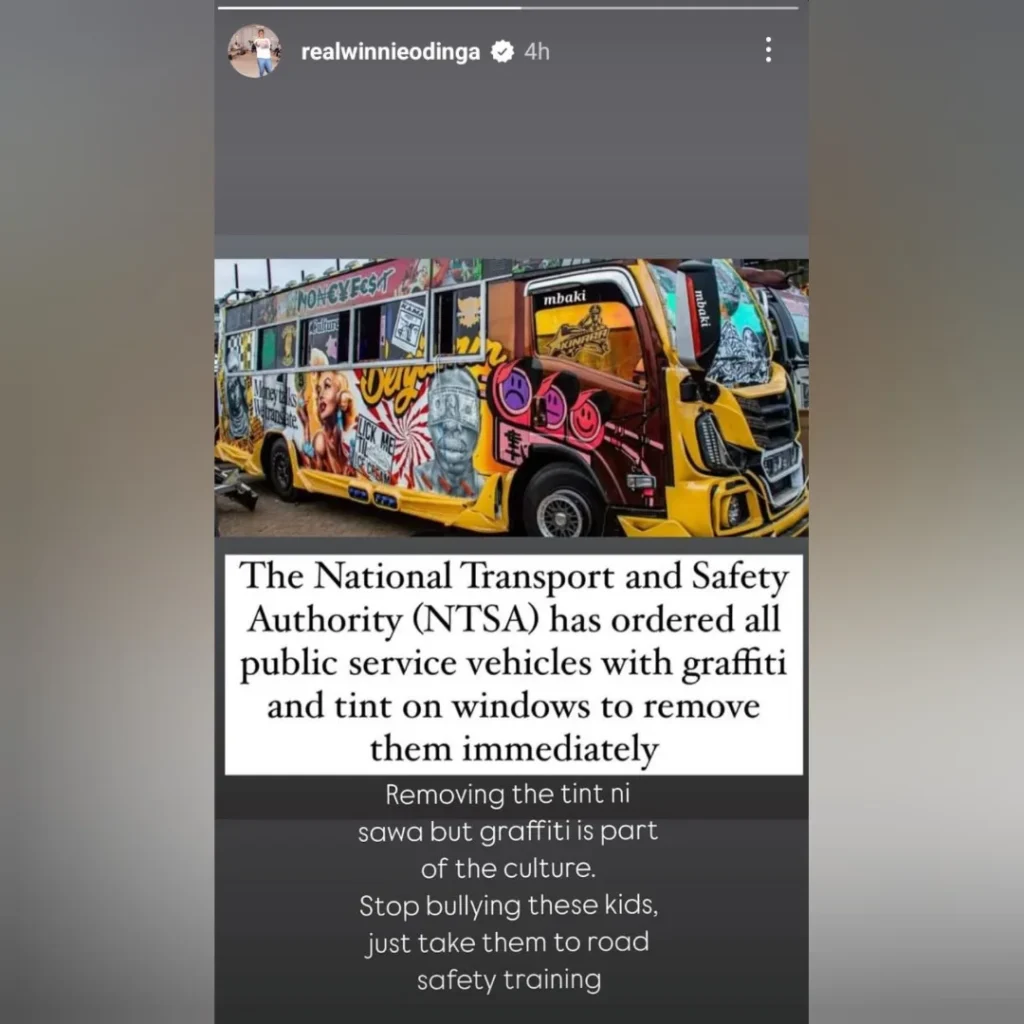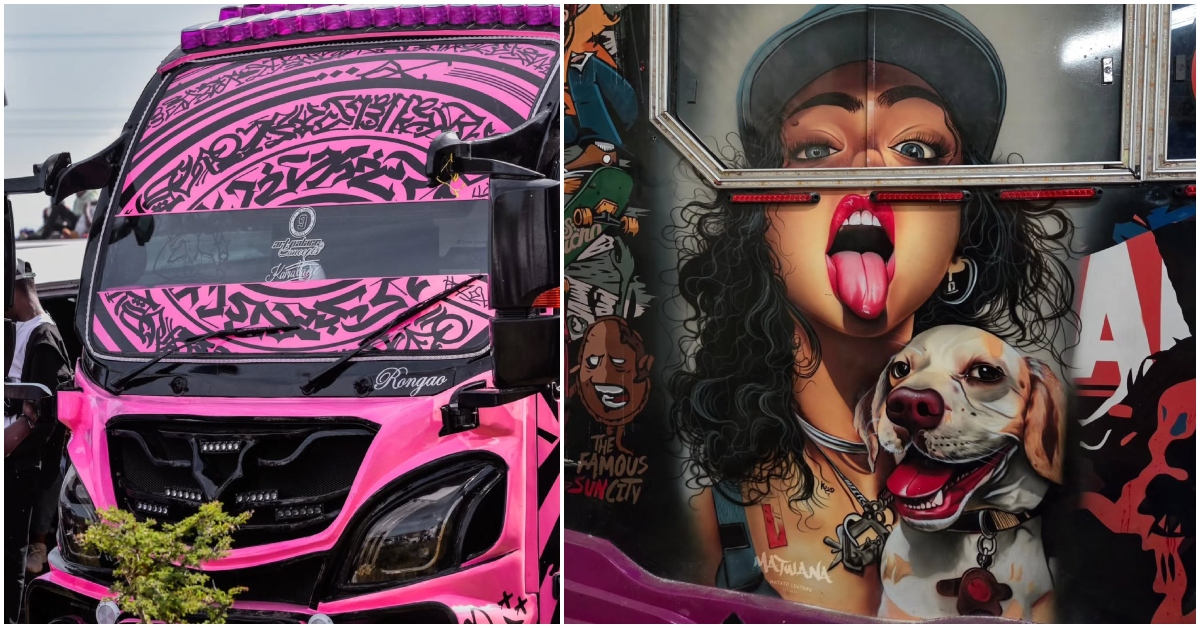The National Transport and Safety Authority (NTSA) has delivered a firm directive to all matatu operators in Kenya, mandating the immediate removal of graffiti and tinted windows from public service vehicles (PSVs).
Failure to comply, the Authority cautions, will attract serious consequences ranging from vehicle impoundment to limitations on access to NTSA services.
In a directive dated Tuesday, May 27, 2025, the NTSA raised the alarm over a disturbing trend, NTSA Director-General George Njao emphasized that the move is part of ongoing efforts to enhance road safety and ensure uniformity in the public transport sector.
“Graffiti and tinted windows on matatus pose significant safety risks, including reduced visibility for drivers and challenges in identifying vehicles involved in incidents,” Njao said. “We are committed to enforcing regulations that prioritize the safety of passengers and other road users.”
The directive targets the vibrant, often flamboyant designs that have become a hallmark of Kenya’s matatu culture, as well as heavily tinted windows that obscure the interiors of vehicles. growing disregard for regulations designed to protect the lives of millions of ordinary Kenyans who rely on public transport every day.
The NTSA has stated that tinted windows hinder law enforcement from effectively observing what happens inside matatus, which could create opportunities for unlawful behavior and put passengers at risk.

Similarly, graffiti is viewed as a visual obstruction that can conceal essential vehicle identifiers, including route information and registration numbers.
Matatu operators have been given a 14-day deadline to comply with these regulations. Any vehicles that still have graffiti or tinted windows after June 11, 2025, will be impounded immediately, and operators will face suspension from key NTSA services such as license renewals and vehicle inspections.
The Matatu Owners Association (MOA) has appealed for a dialogue with the NTSA in an effort to balance operator concerns with the need to uphold safety regulations.

“We recognize the importance of regulation, but this sudden directive has a direct impact on our livelihoods,” said MOA Chairman Simon Kimutai.
Kimutai added that the association is seeking a meeting with the NTSA to discuss possible alternatives, including approved design standards or partial window tinting that still meets safety requirements.
This isn’t the first time the NTSA has addressed the visual and operational standards of matatus. Past enforcement efforts have targeted issues like excessive noise, overloading, and unroadworthy vehicles with mixed outcomes.
The NTSA maintains that the current measures are fully in line with the Traffic Act and its own regulations, all of which are designed to enhance passenger safety and uphold public order.
With the compliance deadline looming, NTSA enforcement teams are set to carry out inspections across the country.
Matatu operators are being urged to act promptly to avoid disruptions to their services. As the sector braces for change, Kenya’s vibrant and globally recognized matatu culture is at a crossroads, sparking a broader conversation about how to balance creative expression with safety and accountability on the roads.
What Did Samson Cherargei and Winne Odinga Say on Graffiti Removal By NTSA?
Nandi Senator Samson Cherargei has lashed out at the National Transport and Safety Authority (NTSA) over its recent directive cautioning public service vehicles (PSVs) over the use of graffiti.
In a statement on Thursday, May 29, Cherargei argued that the directive threatens the livelihoods of many young Kenyans who rely on the matatu art industry.
“To ban matatu graffiti which is an identity; a matatu industry culture in Kenya, is retrogressive, backward, primitive and illegal because it undermines freedom of expression, thought, art and consciousness.
Adding, “This directive must be rescinded as there are young people in Kenya who depend on this graffiti business to eke out a living in scarce opportunities,” he stated.
Taking to her Instagram Stories, Winnie Odinga expressed her disapproval. She argued that while removing window tint is acceptable, graffiti forms an important part of matatu culture.
“Removing the tint is okay but graffiti is part of the culture. Stop bullying these kids, just take them to road safety training,” she stated.

Is Erasing the Art of Graffiti Erasing Our Identity?
The vibrant graffiti on matatus has long been more than just decoration, it’s a voice, a story, a reflection of Kenya’s streets, youth, and creativity.
It speaks in color and rhythm, shouting stories of our youth, our hustle, our dreams. It’s where Nairobi’s heartbeat meets a spray can—where raw creativity rides shotgun.
Nowhere is this spirit more alive than in Matatu Matwana Culture – the sacred ground where wheels meet identity, and the world comes to witness Kenya’s one-of-a-kind moving masterpieces.
For decades, these moving canvases have celebrated music, politics, pop culture, and everyday heroes. They’ve made our commutes loud, colorful, and uniquely Kenyan.
Now, with the NTSA ordering their removal, we’re left asking: Is this a step forward for safety or a step back from who we are?
Are we protecting lives, or silencing a culture? Is this regulation, or is it erasure?



